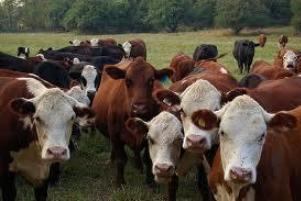Using beta- agonists to improve cattle performance

A variety of FDA-approved growth-promoting technologies are available to producers. The most common growth-promoting technology utilised today are steroid implants. Research has shown that beta-agonists are a great addition to feedlots.
Beta-agonists are molecules that bind to specific receptors in the body and stimulate growth. Generally, they act on the body by increasing muscle growth and decreasing muscle breakdown. They also act by decreasing fat deposition and increasing fat breakdown. By altering muscle and fat deposition in the body, a leaner and larger carcass is produced.
Carcasses from animals fed beta-agonists have larger ribeye areas, reduced back-fat thickness, and decreased yield grade. Producers can expect heavier final live and hot carcass weights when feeding beta-agonists. On average, 15 to 35lb increases in hot carcass weight can be expected. Moreover, ADG and feed efficiency will be improved with the use of a beta-agonist.
For example, if an animal is expected to gain an extra 40lbs of hot carcass weight due to the use of an implant and an extra 30lbs due to the use of a beta-agonist, then if both products are used concurrently, a 70lb hot carcass weight gain can be expected. Therefore, producers looking to take advantage of growth-promoting technologies and add the most gain should consider utilising both steroid implants and beta-agonists.
Currently two beta-agonists are approved for use in cattle: Optaflexx and Zilmax. Optaflexx, an Elanco product, contains the active ingredient ractopamine hydrochloride. Zilmax, a Merck product, contains the active ingredient zilpaterol hydrochloride.
There are several considerations when selecting a beta-agonist for use in the feedlot. Optaflexx is approved to be fed for the last 28 to 42 days cattle are on feed. Optaflexx does not have a withdrawal time. It can be fed at 8.2 to 24.6 grams per ton.
Zilmax on the other hand is approved to be fed the last 20 to 40 days cattle are on feed. It has a 3 day withdrawal time. Zilmax should be mixed into the feed at a rate of 6.8 grams per ton.
Both beta-agonists approved for use in cattle have a wide window of approved feeding durations. However, research has shown that the largest amount of gain is attained when beta-agonists are fed for shorter periods (20 days for Zilmax and 28 days for Optaflexx). Therefore, it is recommended that producers use shorter feeding times not only to see larger cattle gains, but also to reduce costs.
Other considerations for use of beta-agonists include separating and clearly identifying pens that will be fed these products. In many cases, producers utilize pen flags to identify pens that are fed beta-agonists.
Also, it is important to recognize that due to the approved feeding window, marketing strategies must be devised. An example of one is to market all cattle from one pen that appear finished before feeding beta-agonists. This implies that the remains of the pen must be marketed from 28 to 42 days after the start of feeding Optaflexx or from 23 to 43 days after the start of feeding Zilmax.
For more information regarding beef feedlot nutrition or any other beef-related topic, please visit the U of M Beef Team website at: www.extension.umn.edu/beef.
Devan M. P. Compart University of Minnesota Beef Team











